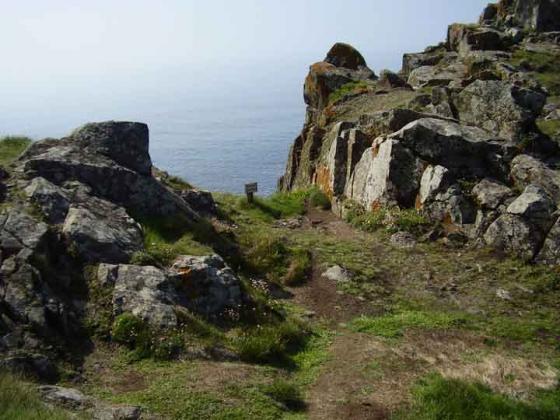
Watch Croft Menhir in the middle distance, with the Beacon on the left and the cairn on the right, from the south-south-east. Photo taken on 29th of May 2004. © Chris Bond.

Watch Croft Menhir in the middle distance, with the Beacon on the left and the cairn on the right, from the south-south-east. Photo taken on 29th of May 2004. © Chris Bond.

Watch Croft Menhir from the west-south-west. Photo taken on 29th of May 2004. © Chris Bond.

Watch Croft Menhir from the north-west. Photo taken on 29th of May 2004. © Chris Bond.

Watch Croft Menhir from the east-south-east. Photo taken on 29th of May 2004. © Chris Bond.

Watch Croft Menhir from the north-north-east. Photo taken on 29th of May 2004. © Chris Bond.

Watch Croft Menhir from the west. Photo taken on 29th of May 2004. © Chris Bond.

Watch Croft Menhir from the south. Photo taken on 29th of May 2004. © Chris Bond.

With cairn to the right.

Midsummer, looking across the moors to Ding Dong.

September 2015

September 2015

September 2015

September 2015

September 2015

Lichen.


Towards Ding Dong.


Stone does its best sundial impersonation...about 11.15am

Watch Croft, one of three views showing the different aspects of the stone.

Watch Croft, one of three views showing the different aspects of the stone.

Watch Croft, one of three views showing the different aspects of the stone.

Looking over the moors to the southeast.

Watch Croft standing stone in summer.

Watch Croft standing stone, viewed from the east.

Watch Croft menhir

After facing centuries of howling south westerly storms, the menhir has developed quite a lean.

Watch Croft longstone near Carn Galver, West Penwith.
On Watch Croft, one massive cairn was built on the very summit of a hill that lacks any tors. On the western edge of the summit area another cairn was built. This cairn incorporates within its structure a series of grounders. The most massive of these is to the north, and is enclosed by the kerb of the cairn. This grounder is 4.5m long, 1.5m high, and has a water-filled solution basin on its upper surface measuring 20x30cm with a depth of 15cm. W C Borlase dug into this cairn. At the time of his excavation the stone with the solution basin was ‘uncovered’. Judging from the amount of cairn material now present within the cairn, and the amount surrounding it that was dug out, this stone was never completely covered. Its uppermost surface, with the solution basin, was meant to be seen.
[..]
This is the only area on Watch Croft where solution basins occur. What is particularly significant is that the cairn overlooks the Men-An-Tol, another culturally transformed solution basin, from which the hill is dominant on the northeastern skyline.[later in the article it is suggested:]
The incorporation of solution basins within cairns, as at Watch Croft and Boscawen Un, or the placing of cairns in their vicinity during the Bronze Age, may be all about connecting the purity of rain water with death rites involving a requirement for purification in relation to the potential pollution of death. The circular form of many of the basins in turn connects them with the circularity of the sun that dies a dramatic fiery death in the sea every day in the west, only to be reborn perfectly formed in the cool air of the eastern morning. Water is thus conceptually connected both to death and the regeneration of life. It both extinguishes fire and gives birth to it. Given that cremation appears to have been the primary burial rite, this general metaphorical connection is of particular interest.
An Archaeology of Supernatural Places: The Case of West Penwith
Christopher Tilley; Wayne Bennett
The Journal of the Royal Anthropological Institute, Vol. 7, No. 2. (Jun., 2001), pp. 335-362.
Watch Croft menhir
SW421357 – A slightly leaning 1.8m menhir, close to a triangulation pillar marking the highest point on the peninsula (252 metres). No finds or alignments have been recorded.













































































































































































